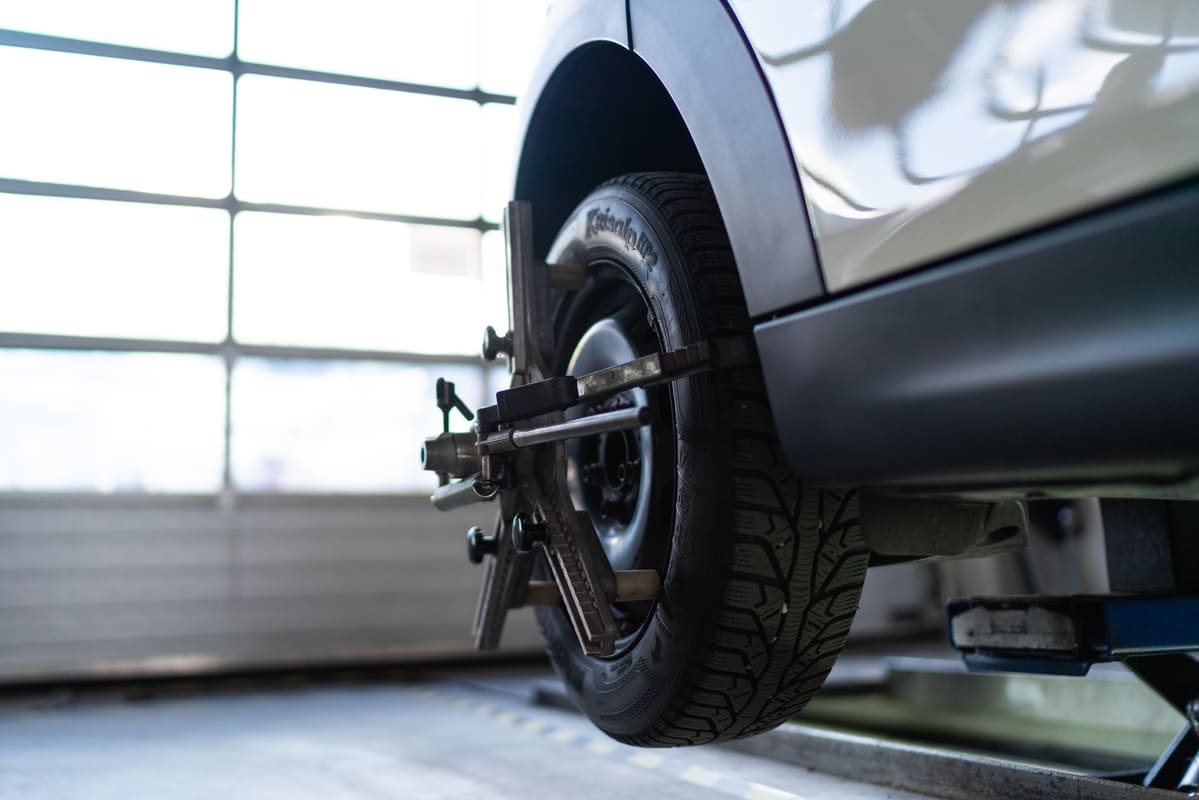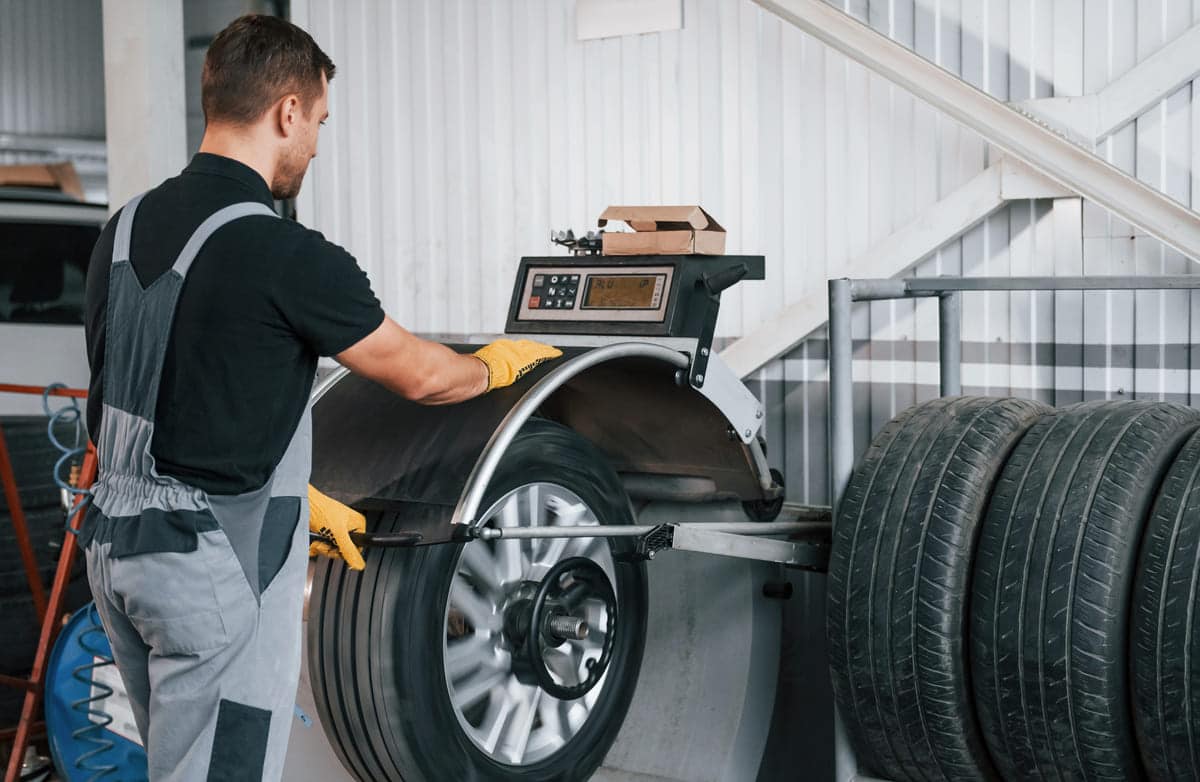Tire balance corrects the imbalance in the tire and wheel by distributing the weight. This involves using a balancer to find the imbalance areas and adding small weights to the to make the ride smoother and less tire wear.
What is Tire Balance?
Tire balance, also known as unbalance or imbalance. Tire balancing corrects the uneven weight distribution in your tires and wheels. Small imbalances can cause vibrations and uneven wear. Mechanics use a balancer to find these imbalances and add small weights to the wheel to fix.
Tire balance is different from alignment. As the tire balance addresses the weight around the wheel. Whereas the alignment adjusts the angles of the tires so they hit the road evenly. Both are important for motor vehicle safety and performance.
Wheel balance is important for several reasons. It prevents uneven tire wear which extends tire life. It also makes for a smoother drive by reducing vibrations. Properly balanced tires improve fuel efficiency because they reduce rolling resistance.
Regular tire balancing improves overall vehicle performance and safety. Many experts recommend balancing every 6,000 to 8,000 miles. Balance your tires when you install new ones or if you feel vibrations while driving.
Don’t ignore tire balance. Unbalanced tires puts extra stress on car components. Addressing balancing issues early will save you money and make your drive better. Make balancing part of your vehicle maintenance routine.
References
- Tire Balance. Wikipedia. Retrieved from
How is Tire Balance Done?
Tire balance involves distributing weight around the wheel. There are two ways: static balancing and dynamic balancing. Both reduces vibrations and makes for smooth driving.
- Static Balancing: Static balancing addresses imbalances on a single plane. Mechanics use a bubble balancer to find the heavy spots on the tire. They then add weights opposite those spots to balance.
- Dynamic Balancing: Dynamic balancing corrects imbalances on multiple planes. A machine spins the tire and wheel assembly. Sensors find where to adjust the weight. Mechanics then add weights to specific points on both sides of the wheel.
How Static and Dynamic Balance Works?
Static balancing makes sure the tire doesn’t have a heavy spot that makes it wobble. This improves ride comfort. Dynamic balancing targets side-to-side and up-and-down movement. It makes the tire rotate evenly for better overall performance.
What equipment is used for Tire Balance?
Mechanics use different tools for balance. Bubble balancers are common for static balancing. For dynamic balancing, computerized spin balancers are standard. These machines gives precise measurements so mechanics know where to put the weights for optimal balance.
Regular balancing with these methods will keep your vehicle stable and extend tire life. Follow manufacturer’s recommendation for best results.
References
- Tire Balance vs. Alignment. Firestone Complete Auto Care. Retrieved from

What is the Purpose of Tire Balance?
This is for vehicle safety and performance. Properly balanced tires reduces vibrations, reduces wear and makes for a smoother drive.
- Safety and Performance: Balanced tires is for safety and optimal vehicle performance. It prevents uneven tire wear which can cause blowouts. It also makes for smooth rides by reducing vibrations. Balanced tires improves handling and fuel efficiency.
- Makes for Smoother Drive: Balanced tire rotation makes all four tires wear evenly. Even wear means smoother drive. It also extends tire life. Regular balancing prevents excessive wear on specific tire areas so they remain effective.
- Effects of Unbalanced Tires: Unbalanced tires can affect vehicle handling and stability. It can cause vibrations that affects steering. This imbalance puts extra stress on suspension components. Ignoring these will cost you money and compromise safety.
- Longevity: Balancing is crucial for vehicle stability and longevity. Balance your tires as part of your regular maintenance. This will make for safer and smoother drive.
What is the Process of Tire Balance?
Here’s the simple steps:
- Remove the Wheel and Tire: Take the tire and wheel off the vehicle.
- Clean the Wheel: Clean the wheel of dirt and debris so it balances accurately.
- Inspect the Tire: Check for damage or uneven wear before balancing.
- Mount on Balancer: Put the tire and wheel on the balancer.
- Spin: The machine spins the tire to find imbalances.
- Add Weights: Add small weights to the wheel to counteract imbalances.
- Re-spin: Spin the tire again to check balance.
Technicians use the balancer’s readings. The machine tells them where to add weight. Technicians then add the correct amount of weight to the exact spot on the wheel so the tire rotates evenly and smooth.
What to Consider and Watch Out For?
- Always start with a clean wheel to get accurate readings.
- Use the right weight for the wheel material to avoid damage.
- Don’t over-tighten the weights.
- Calibrate the balancer regularly for precise measurements.
- Follow manufacturer’s instructions for best results.
Balancing your tires extends tire life and driving comfort. Regular maintenance keeps your vehicle safe and efficient.

Why is Tire Balancing Needed?
Tires become unbalanced for many reasons. Over time, normal tire wear, road conditions and driving habits cause imbalances. Potholes, curbs and debris can also affect tire balance.
Uneven tire wear affects balance. Worn out tread or irregular tire shape causes vibrations. Harsh driving habits like sudden stops can make these worse.
Neglecting tire balance may lead to many problems. Unbalanced tires cause vibrations, affects steering. This imbalance puts stress on suspension components, costly to repair. It also reduces tire life and fuel efficiency.
Balancing every time for smooth ride and safety. Maintenance prolongs tire life and avoids damage. Follow recommended balance checks.
References
- Balancing Tires. Continental Tires. Retrieved from https://www.continental-tires.com/products/b2c/tire-knowledge/balancing-tires/


